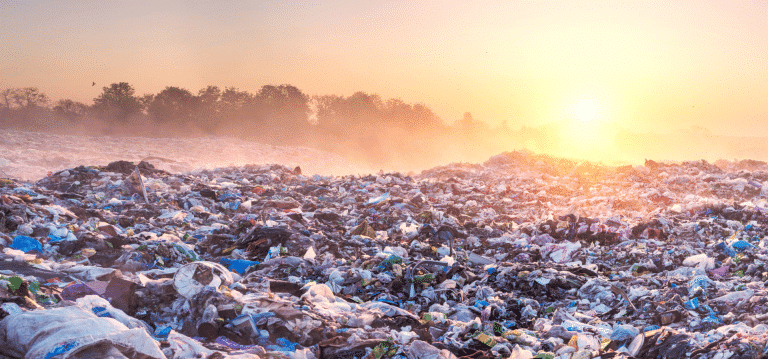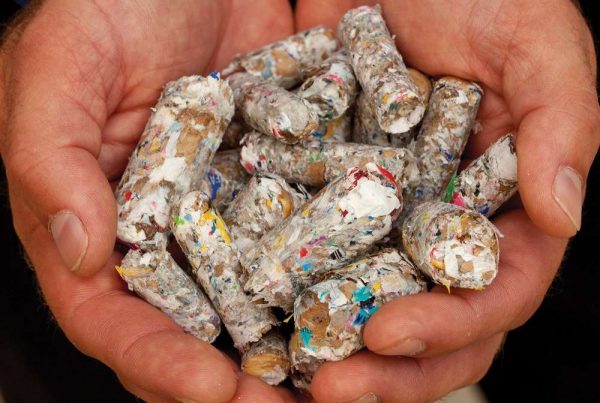The case for converting municipal waste into energy with gasification
There is a misconception in the marketplace that refuse-derived fuel (RDF) – from municipal solid waste (MSW) – can only be disposed of in landfill or in incinerators.
But this is not the case. And, given the increasing pressure on the waste management industry from environmental groups, local activists and legislators, that is increasingly restricting the use of incineration in some parts of the world, now is the time to look for and invest in an alternative method. One with proven, proprietary technology that is both economically viable and more environmentally friendly.
We know that one highly sophisticated technology already exists. Advanced gasification has proven very effective at converting RDF into energy sustainably and cost effectively. This article sets out to explain how this technology works and why it could be the perfect choice for councils/municipalities and their communities, EPC contractors, developers, waste aggregators and waste facility owner-operators, developers and investors.
What is RDF?
Refuse-derived fuel is often used interchangeably with the term municipal solid waste (MSW) in the waste to energy market, although they are not quite the same thing. Rather, RDF is a product of municipal solid waste. It is a means of disposing of MSW.
Municipal solid waste can be classified in different ways. Most commonly it includes miscellaneous solid waste from residential sources but doesn’t include waste streams from commercial and industrial sources (C&I).
To create RDF, the municipal waste is sorted, and all non-combustible materials, such as glass, electronics and metals are removed. The remaining waste is then shredded into a pellet form called refuse-derived fuel. These pellets can be incinerated or otherwise thermo-chemically treated to convert them into energy.
Refuse-derived fuel is one means of trying to offset the environmental impact of this growing waste mountain, by converting as much of it as possible into energy – and our mission is to do so in a sustainable way. What do we mean by that? It means creating plants with a smaller footprint to suit the local area, with lower greenhouse gas emissions, and sustainable in that we set out to first source waste locally, support local businesses and employ local people and enable the move to decentralised energy systems and networks.

The environmental impact of landfill and incineration
The way municipal waste is treated is changing and accelerating. Even though recycling rates are increasing in many countries and households are encouraged to reduce, reuse before recycling, disposing of municipal waste is one of the biggest challenges facing local authorities all over the world.
In July 2021, Eurostat published new data that showed that in the EU 28 countries, recycling had increased from 39% of waste volumes in 2010 to 48% in 2019. Over the same period, landfill usage decreased from 38% to 24% and waste-to-energy increased from 23% to 27%. The EU’s most recent Circular Economy Action Plan targets a further reduction of landfill to just 10% of the total by 2030.
And despite increasing global efforts to reduce waste production and increase the recycling and reuse of all kinds of waste, volumes of municipal waste produced in the developed world are only predicted to grow between now and 2050. There are three reasons for this.
- The first is that landfill emits greenhouse gases such as CO2 and methane which contribute to global warming.
- The second reason is that a large proportion of landfill waste is biodegradable and can therefore be converted into energy.
- The third reason is the drive towards what’s known as the “circular economy”. This is the name given to efforts to produce less waste in the first place, and then to prioritise recycling and reuse of as many resources as possible rather than simply disposing of them. Our role in supporting the circular economy was covered in another of our articles, here.
In many parts of the world, incineration has boomed as it has taken the place of landfill as a means of waste disposal and, more recently, become a means of converting the waste into energy. However, incineration comes with an environmental cost of its own. Because the process of incineration involves burning waste to create heat and gas, it also emits greenhouse gases. These must be captured from incineration plants, at significant cost.
Incineration also produces toxins and pollutants in its flue gas and fly ash, which must also be monitored and cleaned. As a result, policy makers are now increasingly keen to move away from relying on incineration.
As proof of this, in 2018 the European Union agreed to phase out subsidies to incineration plants. Then, in December 2019, the European Commission announced it would exclude incineration from its list of activities that “advance climate change mitigation”. The immediate impact of this would be to exclude incineration from green funding at preferential rates.
Alternatives to the use of incineration are likely to receive more attention in the years to come as a result.
How advanced gasification works
Advanced gasification is a waste to energy technology that works very differently from incineration. Where incineration burns waste in the open presence of oxygen, gasification does not. It applies high levels of heat and controlled oxygen to convert waste without burning it. As a result, it is a more energy efficient, better for the environment – advanced gasification emits 25-30% less greenhouse gases compared with incineration and it also does not produce any pollutants or toxic ash – and is a more cost-effective process.
Myth: gasification doesn’t work with RDF
The waste to energy market suffers from a misconception that gasification does not work to convert RDF into energy.
This is due to several factors. For example, when incineration began to take off in the early 2000s as an alternative to landfill, gasification technology was not yet able to convert RDF to energy at commercial scale.
Recent high profile failures of gasification plants in the UK that were designed to process RDF have compounded this misconception.

How EQTEC R&D has proven the technology does work with RDF
- Sludge
- Rubber
- Demolition rubble
- Plastics
- RDF
RDF-to-energy projects in the UK
EQTEC is leading the development of three RDF-to-energy projects in the UK. In Billingham on Teesside, Southport on Merseyside and Deeside in Flintshire. Find out more about each project and the latest news from site, in our Projects section here.
Advanced gasification is set become the most sustainable way to manage RDF waste - and at a lower cost
We believe there is a very bright future for advanced gasification technology in the RDF/MSW market. With new incineration rules, the upcoming requirements to fit CCS technologies to legacy plants – many of which are approaching their end of life term – and with a high likelihood of calls from environmental and local civic groups against incineration plants and future permits, the confidence from investors in any new incineration plants is becoming increasingly uncertain.
Municipalities, EPC contractors, developers, waste aggregators, and waste facility owner-operators and investors have important decisions to make about future waste to energy projects.
Now is the time for major stakeholders in the waste management industry to look to advanced gasification as an alternative ‘future-proofed’ technology for RDF. EQTEC’s is proven, proprietary and capable of generating energy-from-waste at commercial scale with a double-digit internal rate of return, higher efficiency and a much lower environmentally damaging footprint.
